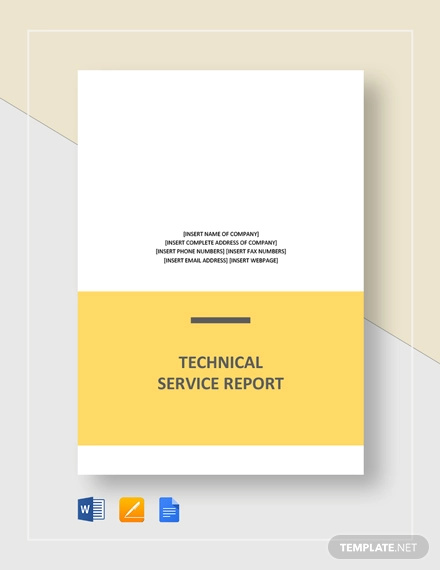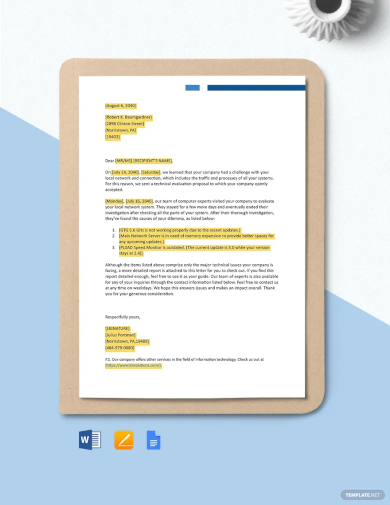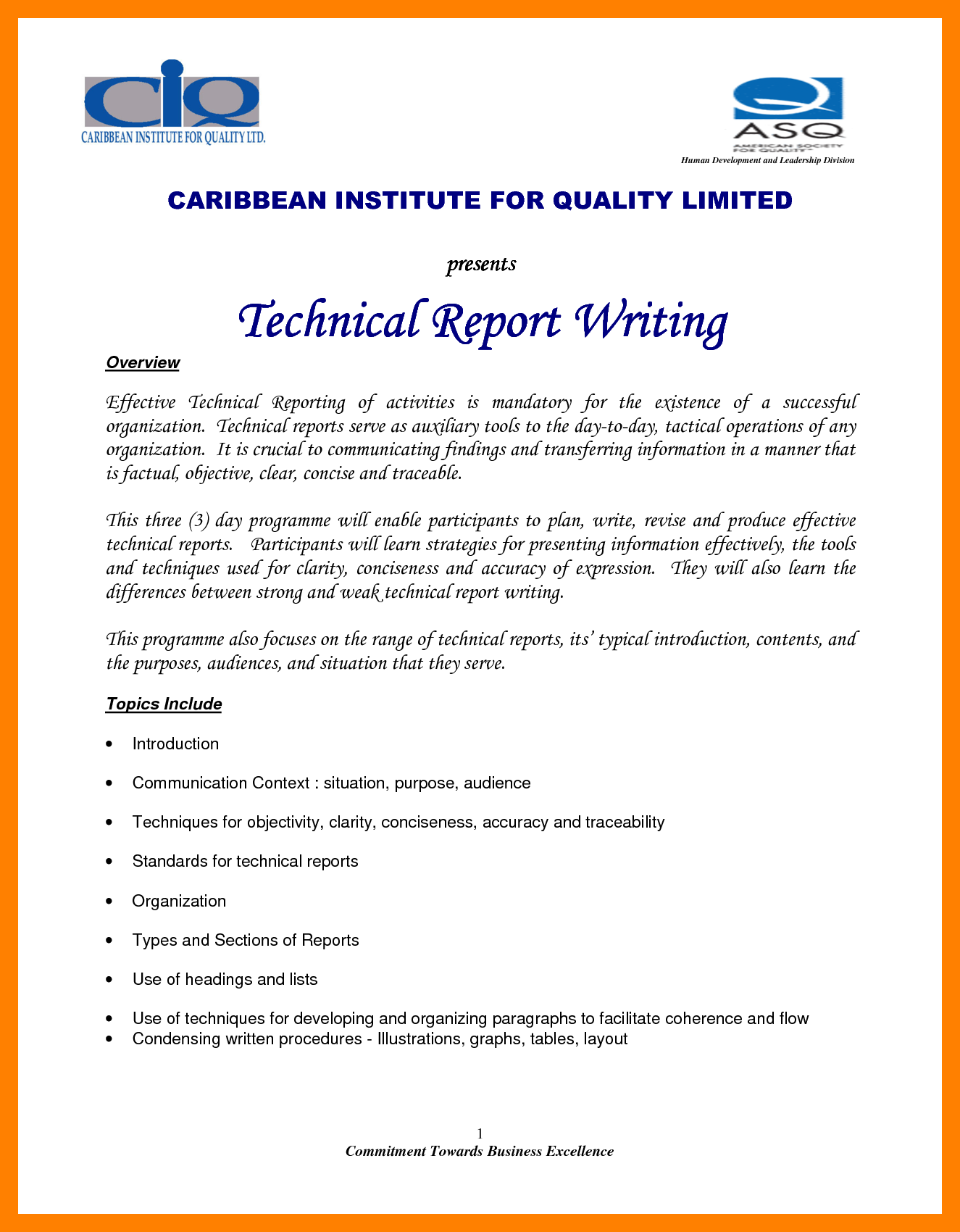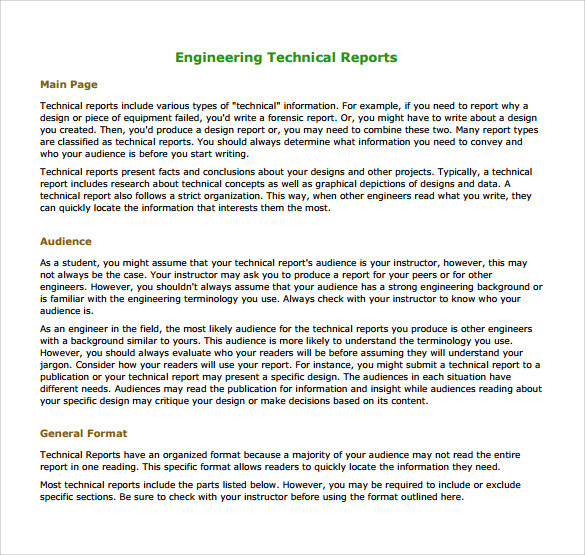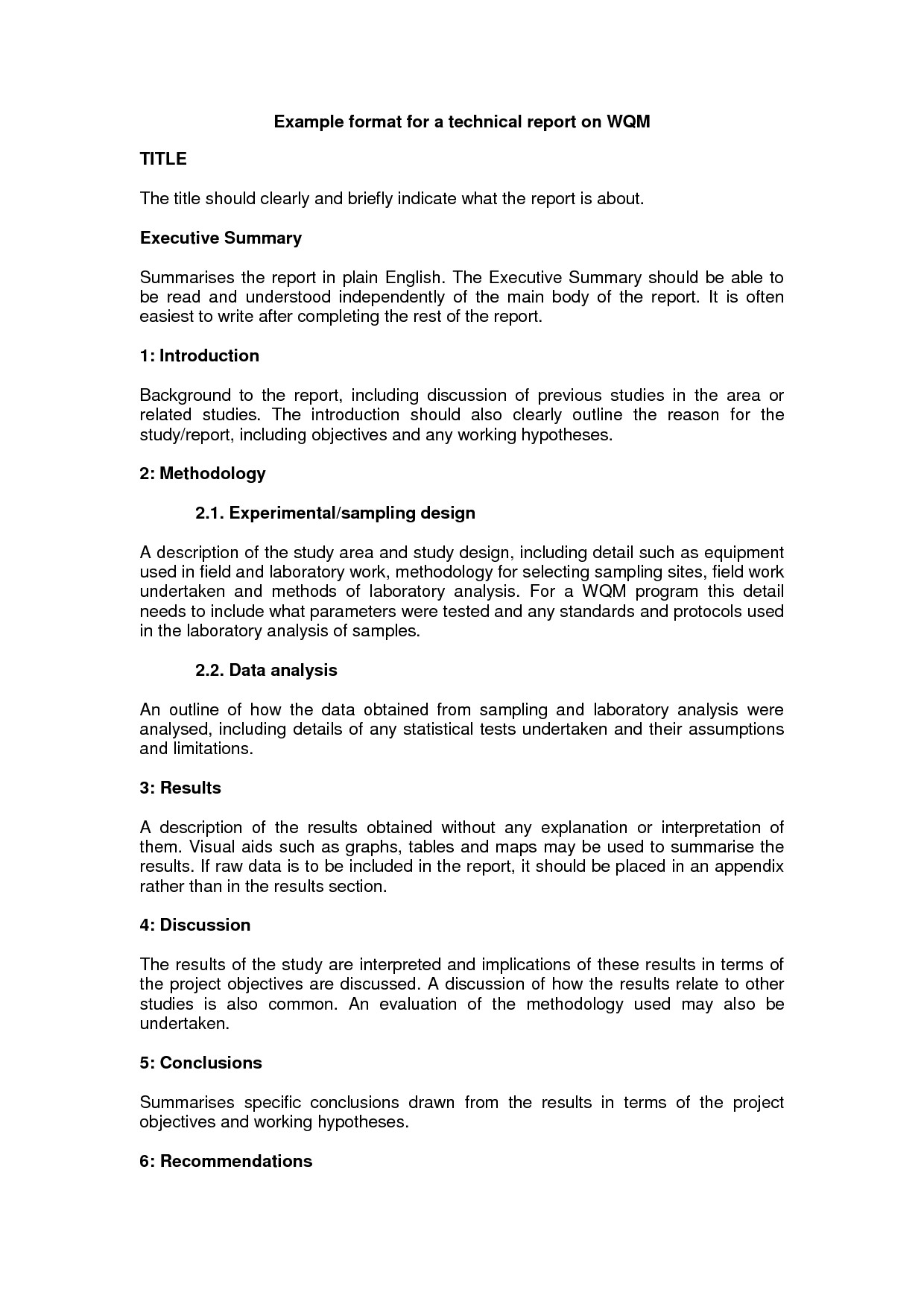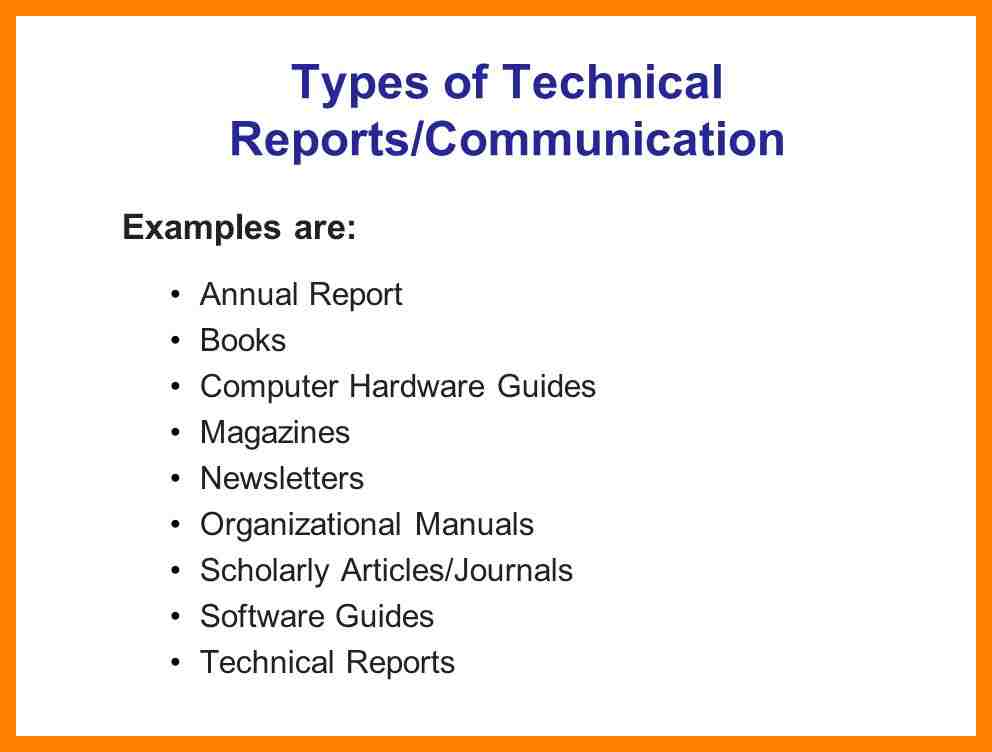Technical Report Writing
Being able to write with finesse and conciseness is an advantageous skill to anyone who has it. Whether they are a student or a professional, writing is a communication medium that they will have to master to be able to effectively answer the many needs that their current position asks them to perform. When writing, you will be asked to use different writing techniques, tones, and diction depending on the topic that you are writing about and the people you are writing it for.
What is Technical Report Writing?
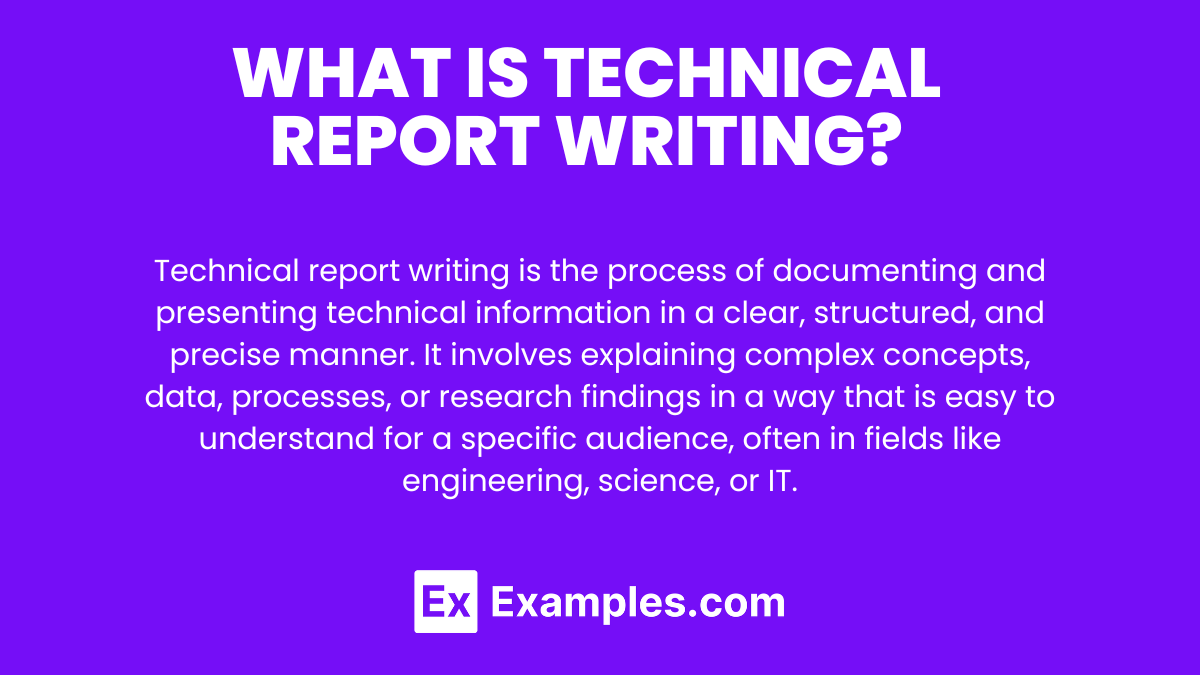
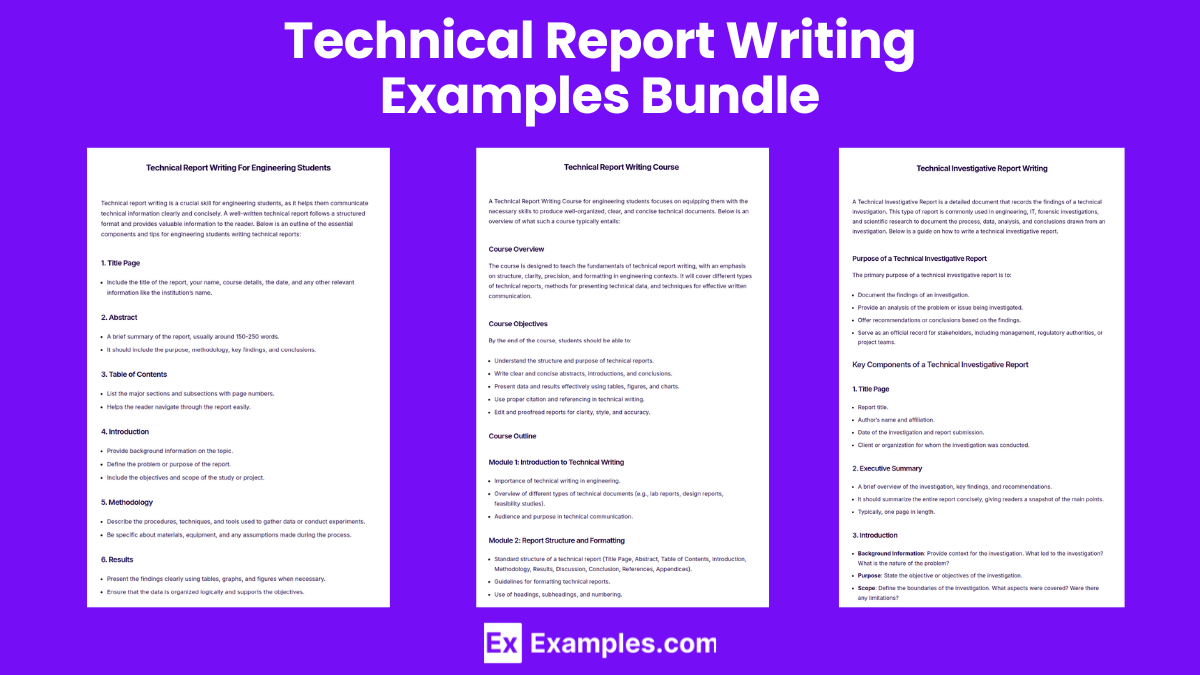
Download Technical Report Writing Examples Bundle
Technical Report Writing Format
Opening Remarks
Greeting: Begin with a professional and respectful greeting.
Examples: “Good morning, everyone.” or “Dear colleagues,”
Introduction
Purpose: Briefly state the purpose of the technical report.
Example: “I am here to present the findings of our recent study on renewable energy solutions.”
Overview
Summary of Contents: Provide a brief summary of what the technical report covers.
Example: “This report will cover the methodology, key results, analysis, and recommendations from our research.”
Methodology
Explanation: Explain the methods used in the report to gather data or conduct research.
Example: “We utilized both qualitative and quantitative methods, including surveys and field tests, to gather data.”
Key Findings
Presentation of Results: Highlight the key findings or results of the report.
Example: “Our findings show a significant improvement in energy efficiency when implementing the proposed solutions.”
Analysis
Discussion: Provide an analysis of the data or results.
Example: “The analysis suggests that integrating solar and wind power systems would reduce energy costs by 30%.”
Recommendations
Suggestions: Offer actionable recommendations based on the findings and analysis.
Example: “We recommend adopting a hybrid renewable energy model to achieve long-term sustainability and cost savings.”
Acknowledgments
Event Organizers (if applicable): Recognize the organizers, sponsors, or contributors to the report.
Example: “We would like to thank the project sponsors for their support and funding throughout this research.”Team Members: Acknowledge the team members who contributed to the report.
Example: “Special thanks to our research team for their hard work and dedication in conducting this study.”Stakeholders: Show appreciation to stakeholders or experts who provided valuable input.
Example: “We are also grateful to the industry experts who provided invaluable feedback during the review process.”
Closing Remarks
Summarize: Recap the purpose and main points of the report.
Example: “In summary, this report presents a comprehensive analysis of renewable energy systems, and we are confident that our recommendations will lead to significant benefits.”Final Thanks: Offer a final word of thanks to all involved.
Example: “Thank you to everyone who contributed to this report, and we look forward to further collaboration.”
Farewell
End with a professional closing statement.
Example: “Thank you all for your attention. We are happy to answer any questions or discuss the findings further.”
Technical Report Writing Example
Good evening, everyone,
I stand before you to present the key findings and insights from our technical report on [insert report topic], which was made possible through the collaborative efforts of many individuals and teams.
Introduction
First and foremost, I would like to acknowledge the report’s contributors and stakeholders. Our research team, with their meticulous data collection and analysis, played a crucial role in ensuring the accuracy and depth of this report.
We are grateful to the technical experts who shared their insights and feedback, helping to refine our conclusions and recommendations.Acknowledgments
A big thank you to the project sponsors for their unwavering support and funding, which allowed us to carry out this research.
We also extend our sincere thanks to the reviewers and editors for their hard work and dedication in preparing this report. Lastly, our gratitude goes to the technical staff and support teams who ensured the smooth functioning of this project from start to finish.
Short Technical Report Writing Example
Good evening, everyone,
I stand here to present our technical report on [insert report topic] and offer our thanks to all those who contributed to this project.
Introduction
First, I would like to thank the report’s organizers for their outstanding planning and coordination. Your efforts ensured the success of this research.Key Acknowledgments
A big thank you to the research team for their dedication and precision in gathering and analyzing the data.
We are also grateful to our expert reviewers and sponsors for their valuable support throughout the project.Conclusion
To everyone involved, your contributions have been essential to the success of this report.
Lastly, I extend my thanks to the technical and support staff who helped ensure everything ran smoothly.Thank you all once again. Have a wonderful evening and safe travels home.
Technical Report Writing For Engineering Students
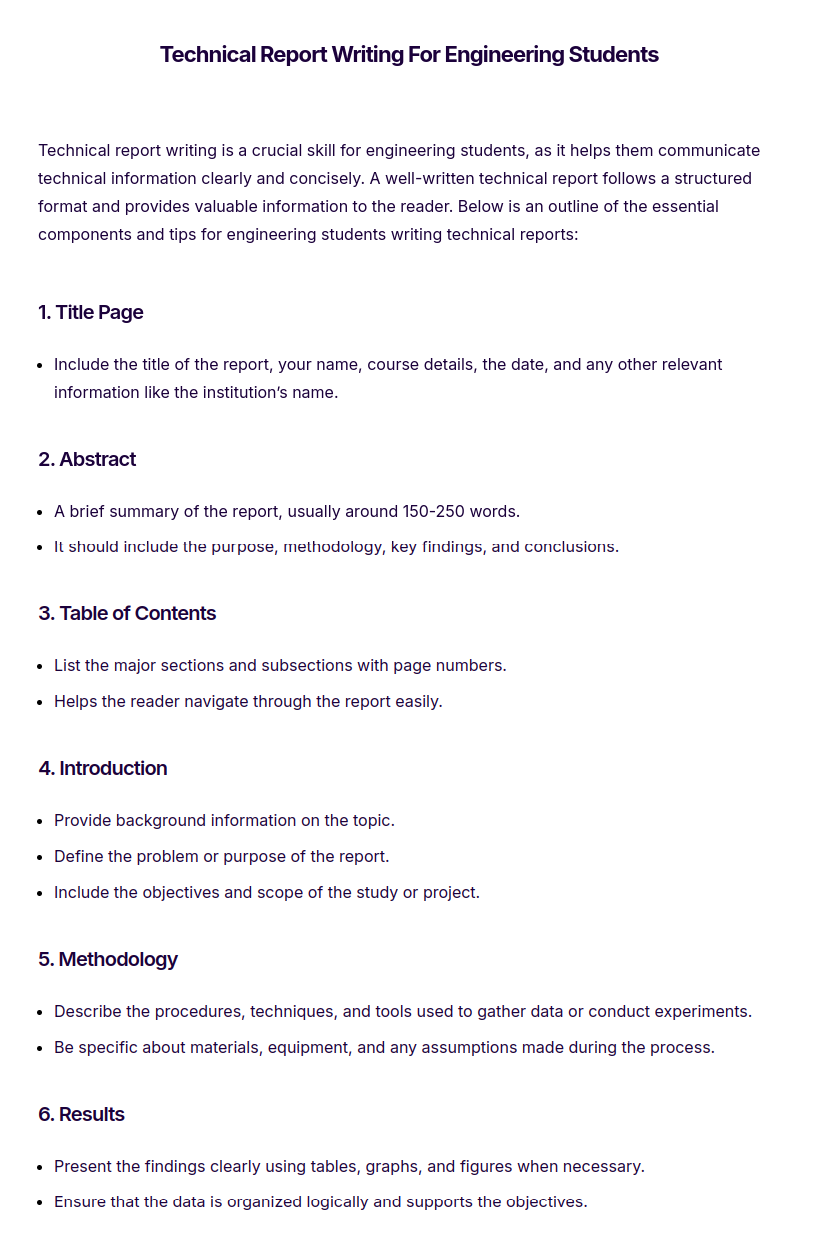
Technical Report Writing Course
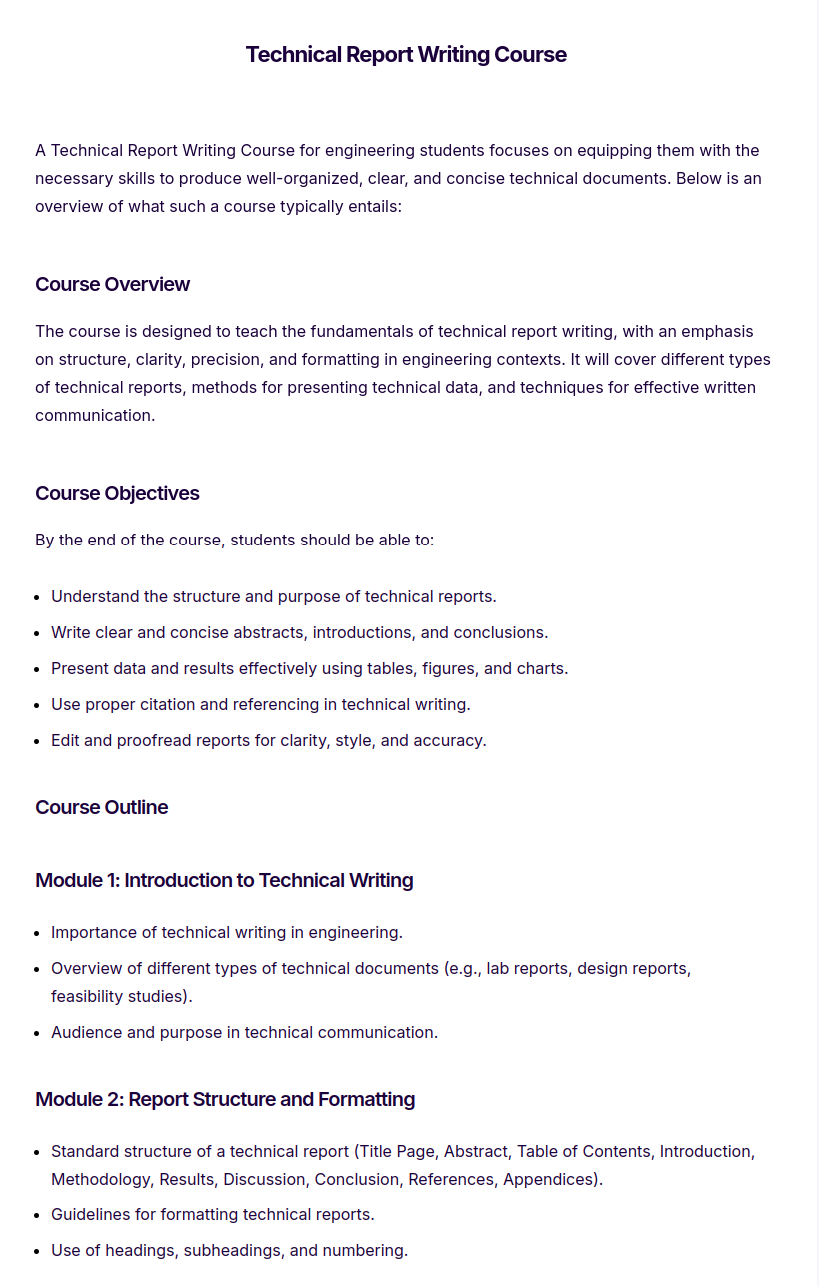
Technical Investigative Report Writing
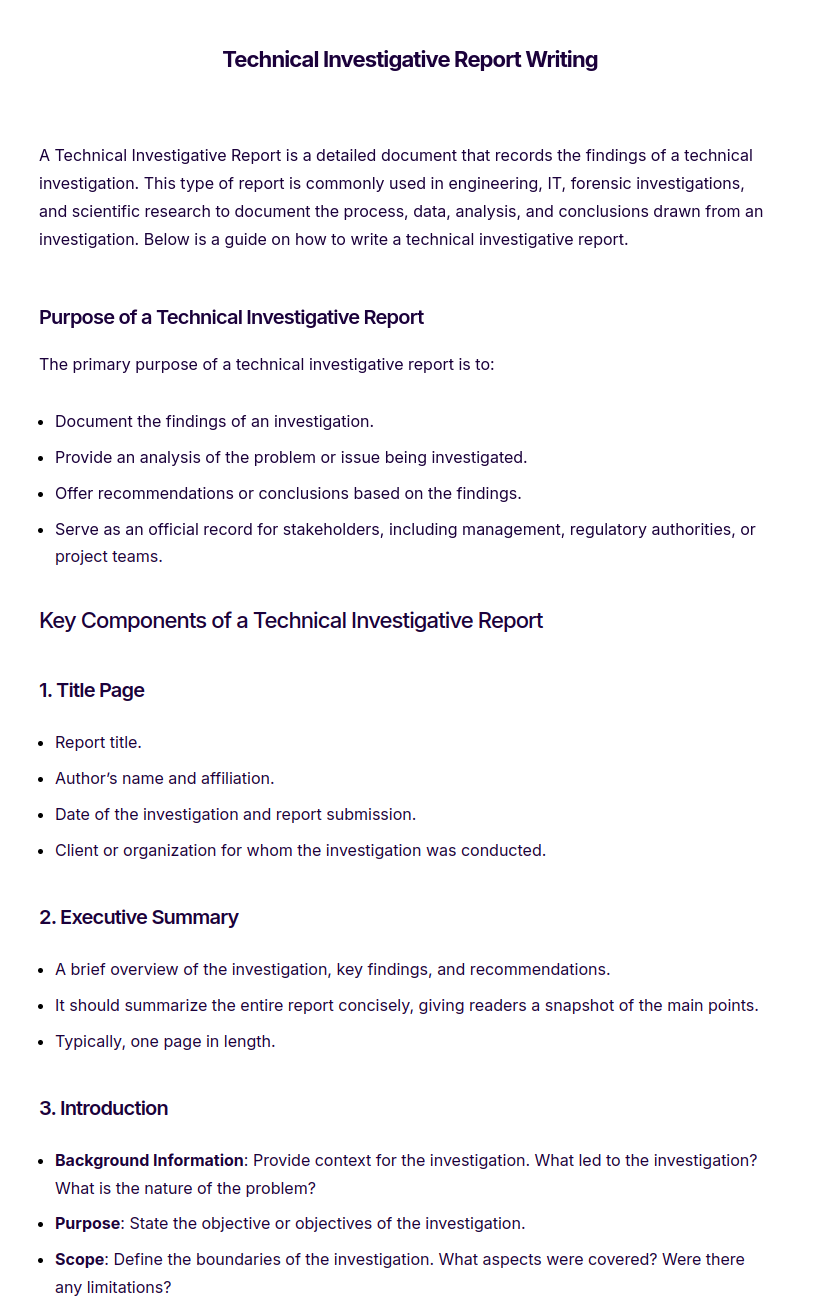
More Technical Report Writing Examples and Samples
Technical Report Writing Class
Progress Report Technical Writing
Technical Report Writing Lecture Notes
1. Technical Service Report Example
2. Free Letter of Transmittal for Technical Report
3. Technical Report Writing Example
4. Engineering Technical Report Example
5. Technical Report Example Format
6. Types of Technical Reports Writing
How to Write Technical Report Writing?
Writing a technical report involves presenting complex information in a clear, concise, and structured way. Below is a step-by-step guide to writing an effective technical report:
Understand the Purpose
Clearly define the goal of the report (e.g., to explain a process, share research findings, or make recommendations).
Know your audience and tailor the content to their knowledge level.Prepare the Structure
A well-organized structure makes your report easier to understand. The typical sections include:
Title Page:
Include the report title, your name, organization, and the date.
Abstract/Executive Summary:
A brief summary of the key points, including purpose, findings, and recommendations.
Table of Contents:
List all sections and sub-sections with corresponding page numbers for easy navigation.
Introduction:
Provide an overview of the report, including its objectives, scope, and the problem or question it addresses.
Methodology:
Describe the methods and procedures used in the research, analysis, or experiments.
Results:
Present the findings or outcomes of your research. Use charts, graphs, or tables to make the data clear and accessible.
Analysis/Discussion:
Interpret the results and explain their significance. Discuss how the findings relate to the objectives and any implications.
Recommendations:
Provide clear, actionable recommendations based on your findings. Focus on practical solutions to the problem discussed.
Conclusion:
Summarize the main findings and reiterate the importance of the report’s recommendations.
References:
Include a list of all sources used in the research, following a consistent citation style.
Appendices (if necessary):
Add supplementary materials like data sets, calculations, or additional details not included in the main report.Use Clear and Concise Language
Avoid jargon or overly technical terms that your audience may not understand.
Break complex information into simpler parts and explain technical terms if necessary.
Keep paragraphs short and focused on one main idea.Use Visuals Effectively
Include charts, graphs, and tables to support your data and make it easier to understand.
Label all visuals clearly and provide explanations for how to interpret them.Edit and Proofread
Review your report for clarity, coherence, and consistency.
Check for grammatical errors and ensure the technical terms are used correctly.
Make sure the formatting is consistent throughout the report.Formatting and Style
Use headings and subheadings to organize your content.
Number sections and sub-sections for easy reference.
Maintain a professional tone and keep the report objective.
Characteristics of Technical Report Writing
Technical report writing is distinct from other types of writing due to its formal, structured, and objective nature. Below are the key characteristics:
1. Clarity
- Information should be expressed in a clear and straightforward manner.
- Avoid ambiguous language, jargon (unless necessary), and overly complex sentences.
- The report should be understandable by the intended audience.
2. Conciseness
- The report should be succinct, focusing only on the relevant facts and data.
- Avoid unnecessary details or explanations that do not directly contribute to the report’s objectives.
3. Objectivity
- Technical reports are based on factual information, data, and evidence.
- Personal opinions and emotions should not be included; the focus is on unbiased, analytical writing.
4. Accuracy
- Every piece of data and information presented in the report must be correct and reliable.
- Measurements, calculations, and technical terms should be precise to avoid misinterpretation.
5. Structure
- A well-organized structure is crucial. The report should follow a logical progression, typically including sections such as Title Page, Abstract, Introduction, Methodology, Results, Discussion, Conclusion, and References.
- Headings and subheadings should be used to organize content clearly.
6. Formal Tone
- The language should be formal and professional, using technical terms appropriately.
- Avoid colloquial expressions or casual phrasing.
7. Visual Aids
- Tables, graphs, figures, and diagrams are often used to support and enhance the data presentation.
- All visual aids should be labeled and referenced within the text.
8. Thoroughness
- A technical report must be comprehensive, covering all aspects of the investigation or analysis.
- The level of detail should be sufficient to allow readers to understand and replicate the findings if needed.
Importance of Technical Report Writing
Technical report writing plays a vital role in various industries and professions, as it provides a structured way to document and communicate technical information. Whether it’s for research, project analysis, or problem-solving, technical reports are essential for conveying complex data in a clear and understandable format. These reports not only facilitate better decision-making but also serve as an official record of findings and recommendations, ensuring professionalism and accountability within organizations.
- Effective Communication of Complex Information
- Technical report writing allows detailed and complex information to be communicated in a clear, organized manner, making it easier for readers to understand technical concepts, data, or processes.
- Documentation and Record-Keeping
- Technical reports serve as official documentation of research, experiments, or projects. They provide a permanent record that can be referred to in the future for reference, analysis, or audits.
- Informed Decision-Making
- Well-written technical reports present findings and recommendations in a structured way, helping decision-makers understand the implications and take appropriate actions based on reliable data.
- Supports Professionalism
- A well-organized technical report demonstrates professionalism and attention to detail, boosting the credibility of the writer and the organization.
- Facilitates Collaboration
- Technical reports often summarize complex projects that involve multiple stakeholders. They provide a common understanding and platform for collaboration by sharing essential information with all parties involved.
- Helps Identify Issues and Solutions
- Through data analysis and discussion, technical reports help identify problems and propose practical solutions, contributing to continuous improvement and innovation.
- Provides Legal and Regulatory Compliance
- Many industries require technical reports for regulatory purposes. These reports ensure compliance with legal standards and can be used as evidence in legal cases or regulatory audits.
- Enhances Knowledge Sharing
- Technical reports help in sharing expertise and knowledge within an organization or industry, providing insights and best practices that others can learn from or build upon.
FAQS
1. What is the purpose of a technical report?
The purpose of a technical report is to provide detailed information, present findings from research or experiments, and offer solutions or recommendations. It is used to communicate technical knowledge and facilitate decision-making within an organization or industry.
2. How should data be presented in Technical Report Writing?
In Technical Report Writing, data should be presented using visuals such as tables, charts, and graphs. These visuals should be labeled clearly and referenced in the text to ensure the information is easily understood.
3. How long should a report be in Technical Report Writing?
The length of a report in Technical Report Writing depends on the complexity of the subject. Reports can vary from a few pages to comprehensive documents, but they should always be concise and focused on essential points.
4. Are recommendations always necessary in Technical Report Writing?
In Technical Report Writing, recommendations are necessary if the purpose of the report is to propose solutions or actions based on the findings. However, if the report is purely informational, recommendations may not be required.
5. Can visuals be overused in Technical Report Writing?
In Technical Report Writing, visuals like graphs, charts, and tables should enhance understanding of the data, not overwhelm the reader. Avoid using too many visuals or ones that are irrelevant. Every visual should have a clear purpose and be explained in the text.
6. What are common mistakes to avoid in Technical Report Writing?
Common mistakes in Technical Report Writing include:
Using overly complex language or jargon.
Not tailoring the report to the audience’s level of understanding.
Providing too much unnecessary detail.
Failing to proofread for errors or inconsistencies.
Not clearly presenting data or visual aids.



